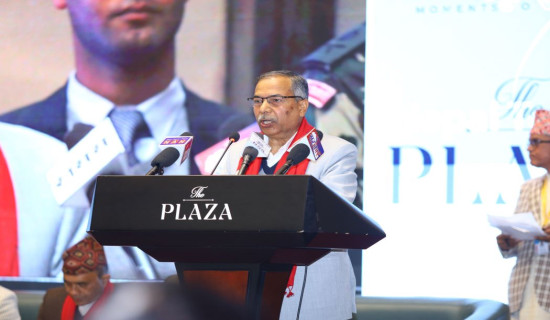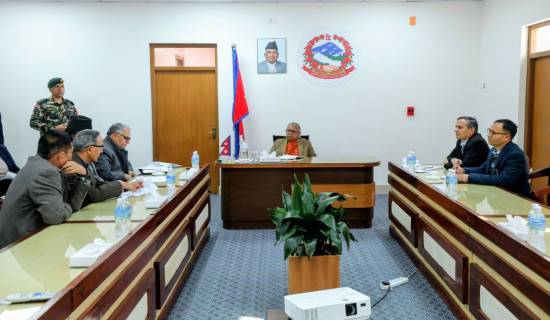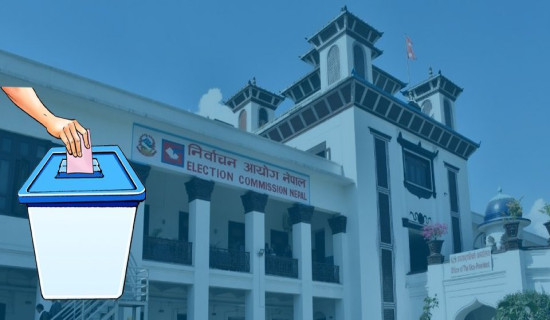- Thursday, 18 December 2025
Promoting Welfare Of Senior Citizens
Our culture has always taught us to respect our old-age elders. This equally applies in a household, in a community and in a society. It has been argued that serving them is our duty, a proof of our civilization and means for our own eternal advancement. The government of Nepal now protects and shows its respect to senior citizens with by providing them with Rs. 4,000 per month. The qualifying age for this allowance has now been reduced from 70 to 68.
Our population growth rate is continuously decreasing over the years. As per the 2021 population census, the population growth rate stands at 0.93 per cent. In the previous censuses of 2011 and 2001, this rate was 1.35 and 2.25 percent, respectively. Although there are noticeable variations across different ethnic groups and geographic areas, the reduction in population growth rates is remarkable. Experts have forecasted that this downward trend will continue. Various economic and social factors, such as increasing costs of living, reduced socio-economic security from one’s children (labour value of children or wealth flow from children to parents is falling), learning from globalisation and desire to have a small family, has led to reduction in population growth rate.
Population growth
But the population of senior citizen is increasing. Following the international standard of 60-year as old-age threshold, the share of elderlies in Nepal is about eight per cent. This was just 3.19 per cent in 2011 and about 2.25 per cent in 2001. The old-age population is estimated to be increasing at the rate of 4 per cent, and 65 and above population alone will reach 15 per cent by 2050. This means it will account for nearly a quarter of our population.
Such a rise in elderly population has several policy implications. First, social policy must have to be expanded. It is obvious that the government will have to pay allowances to many more elderlies. Care responsibility of families will go up along with elderly people’s dependency upon the working age population. It is imperative to design a contributory pension scheme now for all Nepalis whether they work in the formal sector or not. This scheme will substantially reduce future burden on our public finances.
Increase in old-age population has also profound implication for our labour market. More and more people will be out of the labor market as formal retirement age is 58 or around 60 for most of the paid workers. With birth rate decreasing, we may also have to face labour shortage in the distant future. This is what is happening in most of the advanced economies. Japan and South Korea have this problem now. Workers will retire at the age of around 60, but many of them will not be tired. This calls for increasing the retirement age.
Additional and special health care services are also required for elderlies. Common conditions in older age include hearing loss, cataracts and refractive errors, back and neck pain and osteoarthritis, chronic obstructive pulmonary disease, diabetes, depression and dementia. These all demand for geriatric hospitals and manpower will have to be increased to cater the health care needs of the diseased senior citizens. In this case, public as well as private health care expenses will increase. Considering this, the now disturbed health insurance scheme must be implemented across the country.
In the case of not increasing the retirement age, life-long learning schemes will be required to train the retired workers in new set of skills so that they are enabled to work in the areas of their interest and make economic contributions. In Britain, old-age and retired people are getting skill trainings from their local councils and involving in some home-based work. Such work could be handicraft, painting, writing, teaching, gardening, etc.
Increased old-age population has crucial fiscal policy implications. As touched upon a little bit above, old-age costs money to old persons, their families and the government. It demands care service, medical expenses, social security allowances and other facilities. Government must be agile to understand and take necessary policy actions to ensure fiscal sustainability of old-age management.
Commendable progress
Nepal’s progress towards managing senior citizens is commendable as it is based on the principle of social justice. Its old-age allowances are globally praised. The Constitution of Nepal, 2015 and the Sustainable Development Goals (SDGs) have recognised the right of senior citizens as fundamental right. Old-age homes and day care centres are run by the government. However, their management is poor. Discounts on public transport fares and treatment are in operation. The Special National Action Plan, 2062 B.S. for senior citizens outlines the strategic areas of interventions and focused activities for their overall advantage while the Senior Citizen Act, 2062 B.S. and its Regulations ensure their socio-economic and other rights. Senior Citizen portfolio has also been added to the Women and Children Ministry for overall policy and implementation coordination for easing the lives of senior citizens. The Ministry is trying its best to ensure that the seniors are protected and respected in our society.
To conclude, senior citizens are very precious assets of any society. They have transferable knowledge, skills and experiences which are immensely useful to the young generation. With the rising trend of old-age population, individuals, families and government must act to ensure that senior citizens remain happy and healthy.
(Dr. Bhusal works at the National Planning Commission.)
















